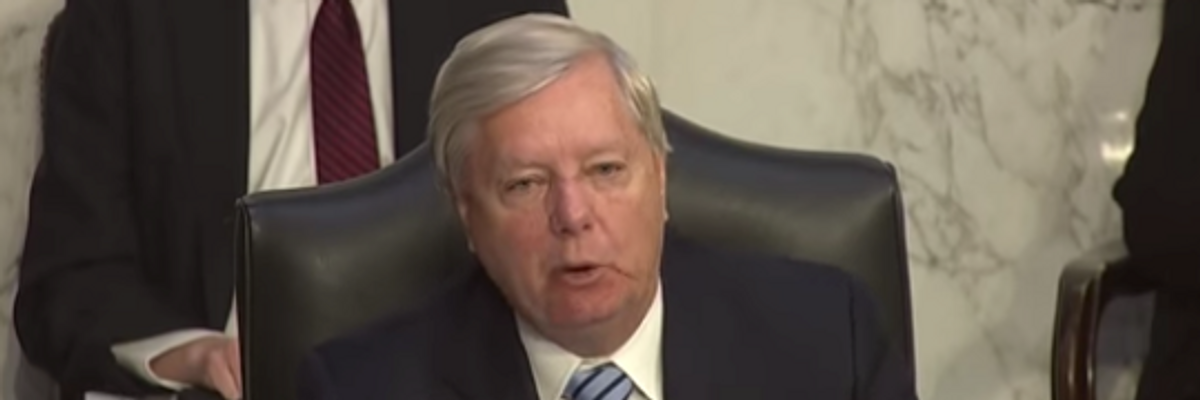Yesterday, Sen. Lindsey Graham (R-S.C.) was very upset. “It’s just a matter of time until some terrorist group — probably from Afghanistan, maybe from Syria, maybe from Afghanistan, maybe from Somalia — works its way through our southern border to kill a bunch of us,” declared Graham. “America’s threat from radical Islam has gone up, not down, our policies in containing the threat are not working, Afghanistan is a breeding ground for terrorism as I speak, everybody that we work with is being slaughtered and we want to talk about closing GITMO and restricting the drone program.” Graham concluded, “You’re living a dream world!”
Watch it:
While Graham’s outburst was striking in its own right, the testimony that provoked him illuminates how proponents of a drone program that is largely unaccountable for its civilian casualties fall back on emotional talking points about the threat of terrorism rather than grappling with the real national security, economic, humanitarian and legal costs of two decades of war. This goes for their continuing support for the Guantanamo Bay detention facility in Cuba, the offshore prison for GWOT detainees that has served as a propaganda tool for al Qaeda affiliates and the Islamic States of Iraq and Syria (ISIS), too. Half of the witnesses before the committee offered tangible steps to reduce civilian casualties and reassert Congressional authority or war making, far short of surrendering to terrorists as Graham seemed to suggest.
Hina Shamsi, director of the American Civil Liberties Union’s National Security Project, urged the committee to “demand that Executive Branch officials testify about their legal and policy justifications for using lethal force in countries where Congress did not authorize it,” “deny funding for unauthorized and unlawful user of force,” and reassert Congressional controls over declaring war.
Radhya Al-Mutawakel, chairperson of Mwatana for Human Rights, a Yemeni human rights organization, called for a review of “the lawfulness and civilian impact of each operation undertaken since the United States began using lethal force in Yemen nearly two decades ago and take a hard look at whether these operations have been at all effective in making anyone safe.”
While those calls for accountability for drone strikes and War on Terror policies that undermine the rule of law and provide propaganda for terrorists seemed to get under Graham’s skin, it might be because the weapons most responsible for civilian atrocities are partially responsible for paying for his 2020 senate campaign.
The second biggest source of campaign contributions supporting his winning 2020 campaign were employees of Lockheed Martin, a major producer of drones.
Graham had at least one witness at the hearing who didn’t throw him into a rage: Retired General John Jumper. Graham asked Jumper, “the drone program, has it been an effective tool in terms of killing terrorists?” To which Jumper responded, “very effective, sir.”
Jumper didn’t disclose in his testimony that, while retired from the Air Force, he served as chairman and CEO of drone manufacturer Leidos from 2012 to 2014, and continued to serve on its board of directors until 2018. (Lockheed owns 50.5 percent of Leidos.)
In 2017, Leidos was awarded a $900 million contract to support the Air Force’s drone program.
But Graham and Jumper’s financial and political ties to the drone industry weren’t considered relevant for disclosure by either of them. Instead, Graham shouted at human rights and civil liberties advocates and said that reviewing the drone program and working to close GITMO is defeatism and, inexplicably, would help terrorists in their efforts to “find a way to kill three million of us.”














